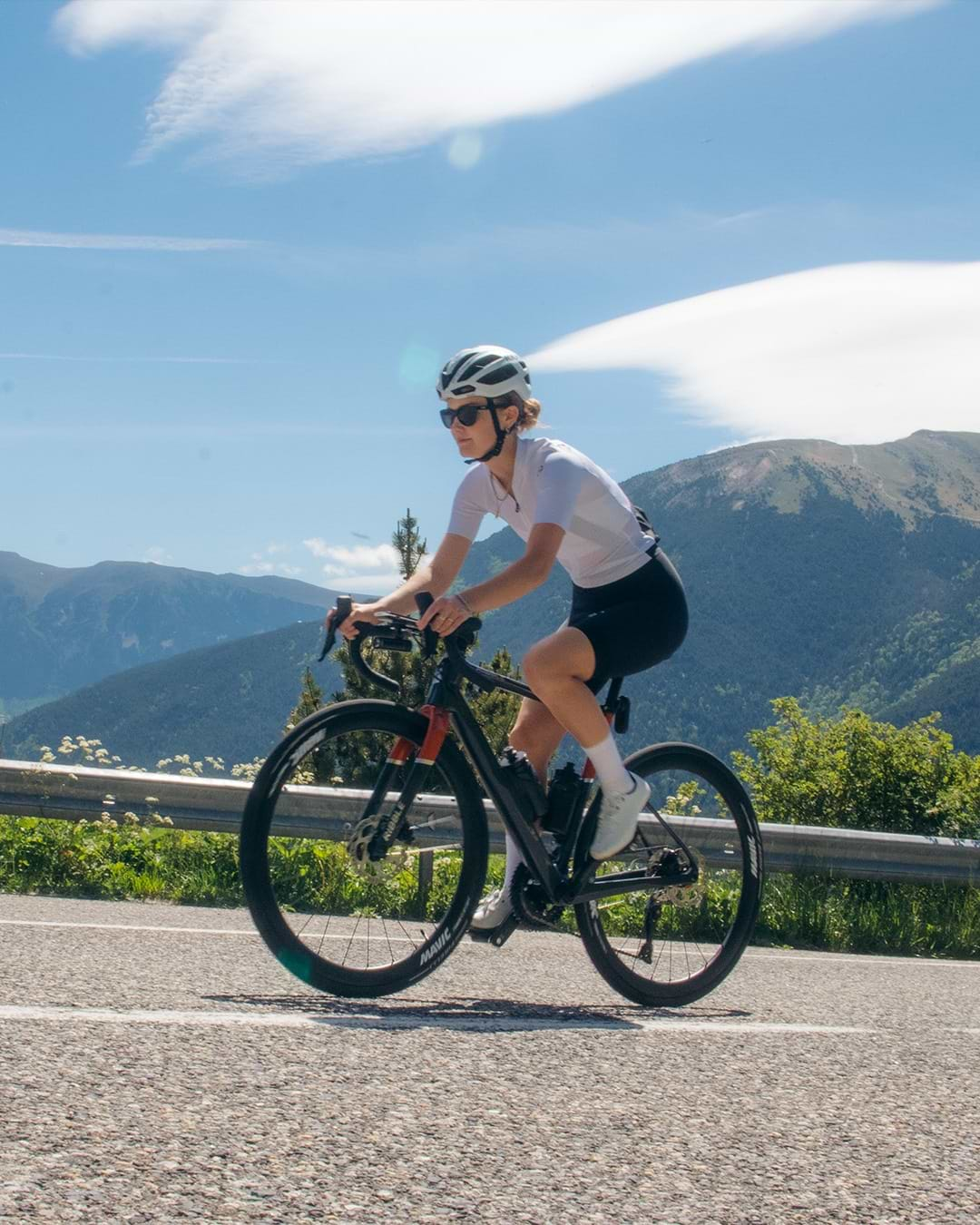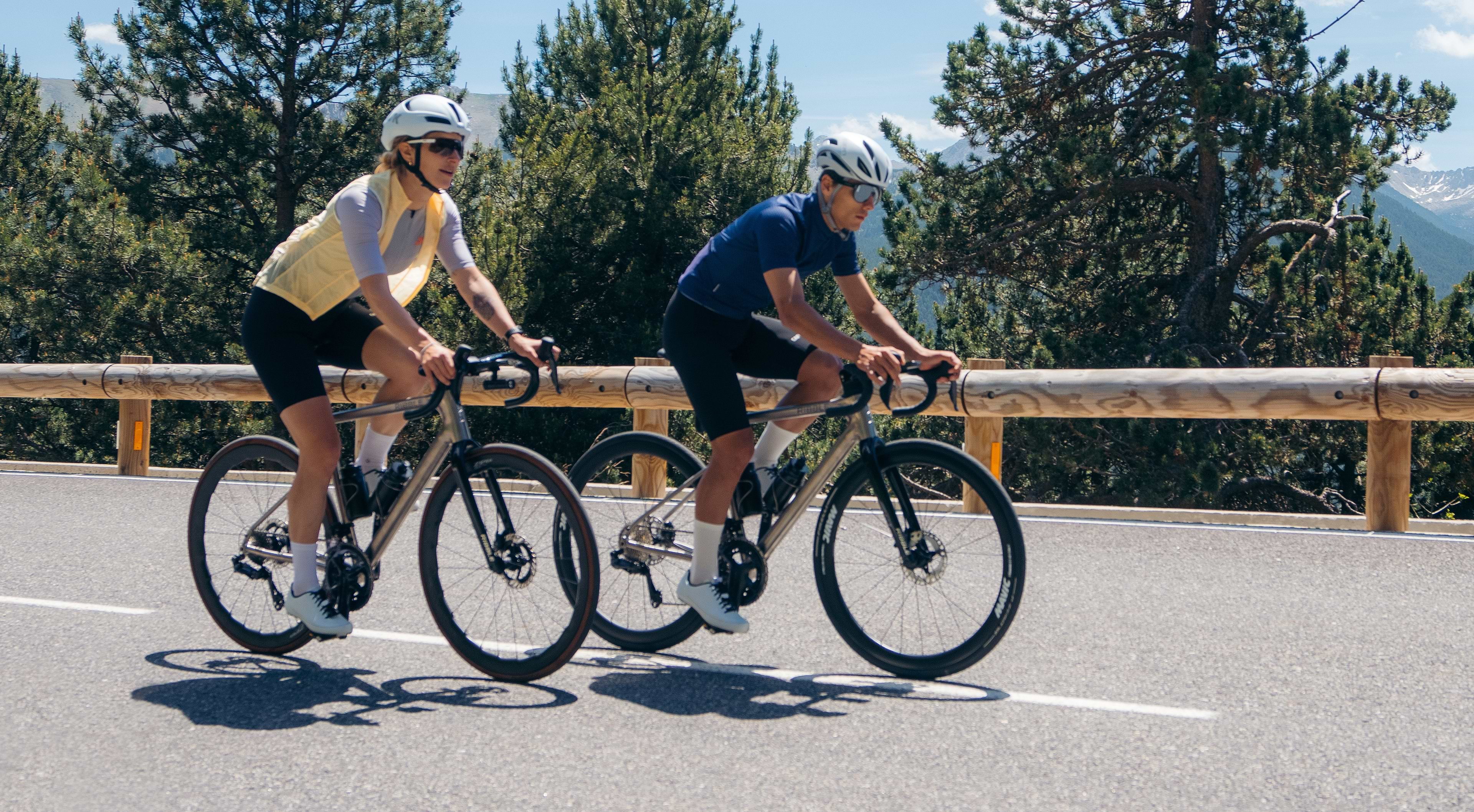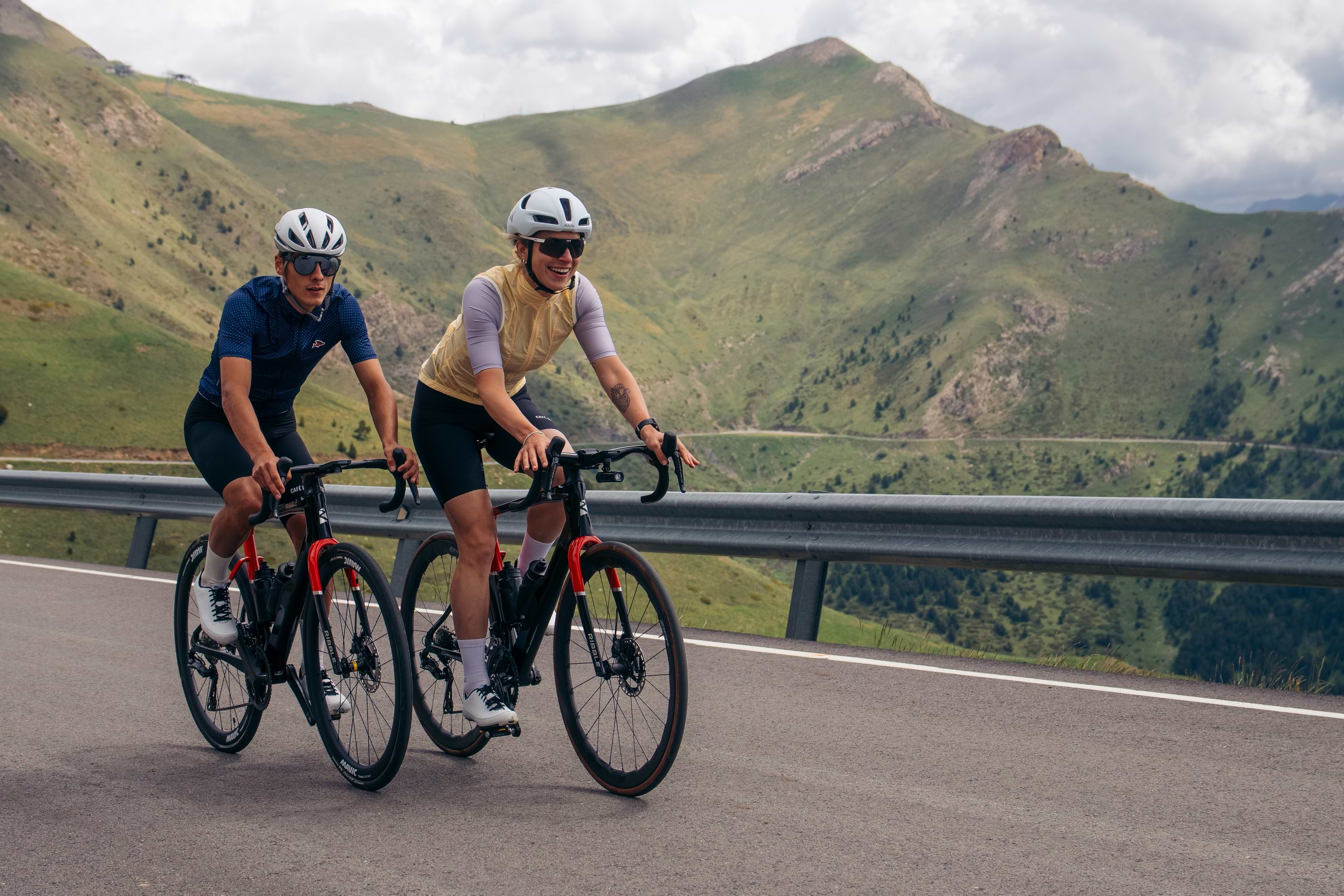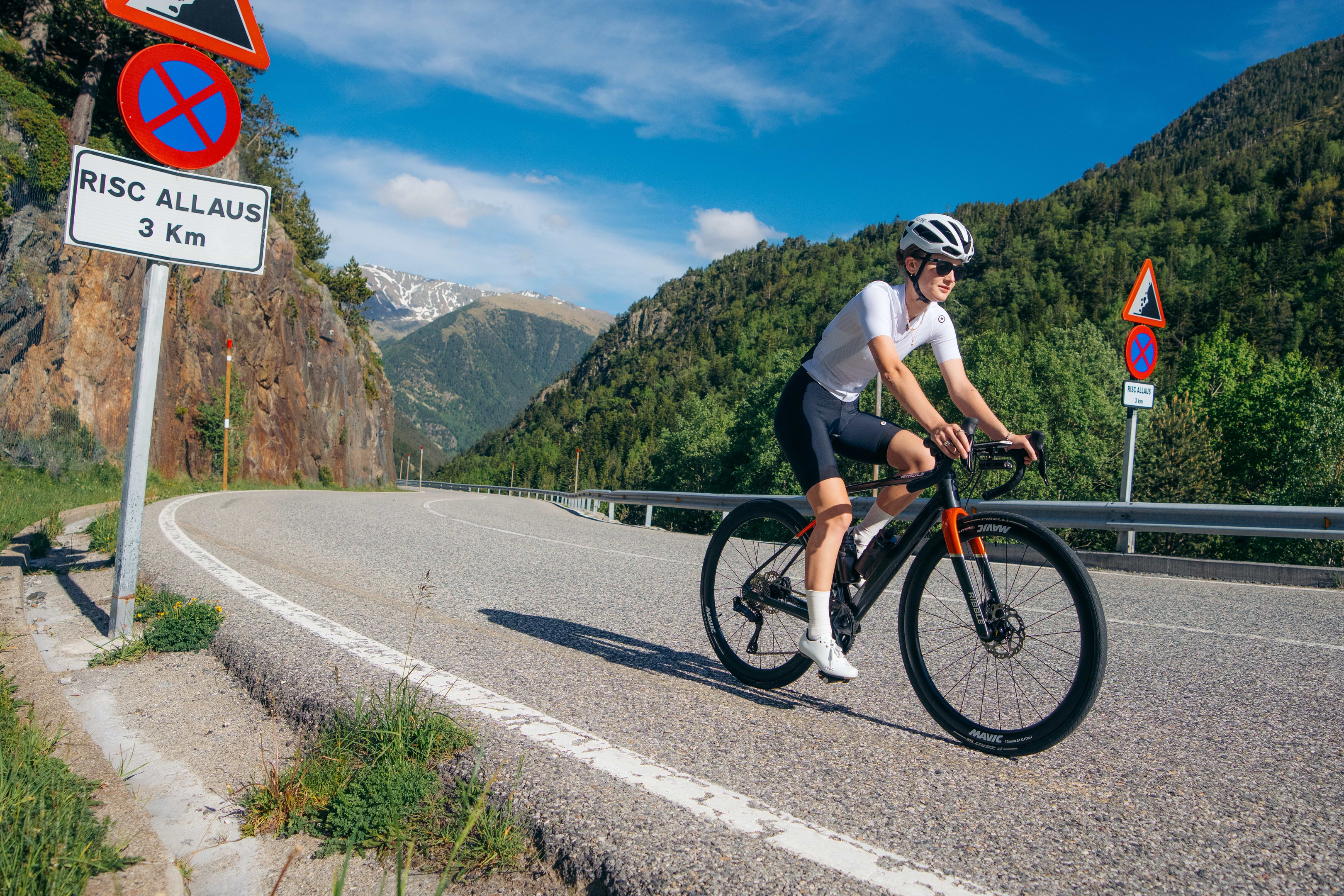
Cycling Tips for Beginners
Ribble’s ultimate guide offers essential tips for beginners, from choosing the right bike and gear to practising road safety and building confidence on the road. Whether you're aiming for fitness, fun, or commuting, our expert cycling for beginners advice will help you pedal smoothly towards your cycling goals.
Choosing the right bike
Find your Fit
Choosing the right bike involves several important considerations to ensure a comfortable and enjoyable cycling experience. First, determine your riding style: different bikes cater to various needs, such as casual riding, commuting, road cycling, mountain biking, touring, or even a combination of all the above. The type of bike you choose should align with your primary use. Road bikes are ideal for speed and efficiency on paved surfaces, mountain bikes for rough terrain, hybrid bikes for versatile use, and commuter bikes for daily travel. Additionally, consider the frame size and fit, which are crucial for comfort and efficiency.
Frame materials like aluminium, carbon fibre, steel, and titanium each offer different weight, strength, comfort, and cost benefits. The components that make up your bike (the groupset) can also significantly affect the bike’s performance: Gearing options should match the terrain you plan to ride on, with larger gears being more beneficial for hilly areas. Suspension can also play a part in comfort and performance: choose from suspension-less road bikes to suspension equipped Hybrid bikes for maximum comfort.
Set a budget that aligns with your cycling goals, keeping in mind that entry-level bikes are affordable and sufficient for beginners, while mid-range and high-end bikes feature better components and performance.
Essential Gear for Beginners
Wearing a Helmet
The most important part of your gear is a helmet. A properly fitted helmet can significantly reduce the risk of head injuries and could save your life in a collision. When selecting a helmet, ensure it meets safety standards and fits snugly without being too tight. Position it level on your head, covering your forehead, and adjust the straps to form a 'V' under your ears.
Protect Your Hands
Not just useful in winter, cycling gloves and mitts protect your hands by providing extra cushioning to reduce pressure on your palms and prevent numbness during long rides. Gloves also offer better grip, especially in wet or hot conditions, and protect your hands in case of a fall. Choose gloves with good padding and breathable fabric for maximum comfort and protection.
Add Comfort to Your Ride: Wear Padded Cycle Shorts
Padded cycling shorts are a must for comfortable long rides. The built-in padding reduces friction and absorbs shock from the road, preventing saddle sores. Look for high-quality shorts with moisture-wicking fabric to keep you dry and comfortable for a visible improvement to your cycling ride.
Dress for the Weather
Layering is a classic staple essential for dressing for the UK weather and is something to keep in mind on a bicycle, too. Start with a moisture-wicking base layer to keep sweat away from your skin. Add a thermal or insulating layer for warmth, and top it off with a windproof or waterproof outer layer. This approach allows you to adjust your clothing as needed, ensuring you stay comfortable no matter the weather.
Accessorise: Bottle Cage, Lights and More
This could include adding storage options like a water bottle cage to stay hydrated on your ride or luggage, allowing you to carry items while you travel. Lights are a must; they increase your visibility in low-light conditions and are a safety essential. To be fully prepared for an unexpected situation, make up a basic tool kit with tyre levers, pump, multi-tool and a spare inner tube to handle minor repairs while travelling.
Get Comfortable
Adjust your new bike
Ensure you can comfortably straddle the bike and that the reach from the saddle to the handlebars suits your body shape. Start by standing next to your bike, with the saddle set at hip height. When you sit on the bike, you may need to tweak it so that your leg is almost fully extended at the bottom of the pedal stroke.
A top tip is to place your heel on the pedal. If your leg is fully extended, the saddle is too high, while too much of a bend indicates it's too low. You want to aim to have a slight bend in your legs at the bottom of each pedal stroke. Ensure the handlebars are set at a comfortable height and distance. Take your time to really make sure you’re comfortable, as this will make for a more efficient and enjoyable riding experience.
Practice safe road cycling
Obey traffic laws, signal your intentions clearly, make eye contact with drivers at junctions and stay aware of your surroundings. Joining a local cycling group or riding with other cyclists is a great way to gain support and build confidence. Don’t be put off by intimidating drivers; act reactively and responsibly should a difficult situation arise. You may also want to invest in a cycling camera. Try to anticipate what other road traffic may do. For instance, if you see a vehicle waiting to join the carriageway ahead, slow down a touch, just in case.
Relax your hands on the handlebars
A tight grip on the handlebars can cause tension and discomfort. For better control and less fatigue, keep your hands relaxed with a light grip and change hand positions frequently to prevent numbness and strain.
Practice efficient pedalling
Maximise your power by using the entire pedal stroke. Focus on a smooth circular motion, pushing down, pulling back, lifting up, and then pushing forward. Engage your core and use clip-in pedals, which help to maintain this technique. Long-term, this will increase your power and endurance, making rides less tiring.
Drafting is another technique that encourages efficiency. In this technique, you ride closely behind another cyclist to save energy and increase your speed. It is especially effective on longer rides or in group settings. Remember to maintain a safe distance and stay alert and responsive to the lead cyclists’ movements.
Learn how to repair a puncture
- Use quick-release levers or an Allen key to remove the wheel from your bike.
- Deflate the tyre completely, then use the tyre levers to carefully pry it off the rim and remove the inner tube.
- Once removed, inflate the inner tube slightly to identify the puncture—listen or feel for escaping air. Top Tip: If needed, submerge the tube in water and look for escaping air bubbles.
- Dry the area around the puncture, then apply sandpaper to roughen it. Spread glue around the hole, wait for it to become tacky, and press the patch firmly over the puncture. Alternatively, if you don't fancy carrying out a full tube repair at the roadside, swap out the inner tube for your spare and save the tube repair for when you make it home.
- It’s crucial that you inspect the inside of the tyre for whatever sharp object might have caused the puncture and remove any you find. Running your fingers along the inside of the tyre is the best methid for this, but take care not to cut yourself on a piece of glass or thorn!
- Fit the tyre back to the wheel rim so that one side of the tyre bead is fitted correctly and the other is free to receive the tube.
- Partially inflate the patched (or new) tube, feed the valve into the valve hole and fit the tube back inside the tyre. Ensure the tube isn’t pinched between the tyre and the wheel rim. Top Tip: Place both hands around the tyre and firmly press each side of the tyre bead all the way round to ensure it is seated correctly before inflating.
- Fully inflate the tyre to the recommended pressure, checking that it’s seated evenly on the rim (the recommended pressures will be marked on the sidewall).
- Place the wheel back onto the bike, securing it with the quick-release levers or thru-axle.
- Spin the wheel to ensure it’s properly aligned and the brake pads don't contact the rim or disc rotor.
Plan a cycle friendly route
When planning a cycle-friendly route consider quiet roads, dedicated cycle paths, and scenic routes for a better cycling experience. Use cycling-specific maps or apps to find routes with low traffic and good riding conditions. Look for routes with places to stop, such as cafes and bike repair shops. Check the weather forecast to make sure you’re dressed appropriately for the conditions.
Download ride-sharing apps
Connect with other cyclists, share your bike ride, and track your progress with ride sharing apps such as Strava or Komoot etc. It allows you to record your rides, analyse performance data, and share your routes with friends and the wider cycling community. You can also join challenges, set personal goals, and discover new routes. Simply download the app and create an account to start logging your rides.

Key takeaways: Beginner road cycling tips
Start small - Gradually increase your ride distance and intensity to build confidence and fitness effectively.
Ride with others - Learn best practices from experienced cyclists for a less lonely and more enjoyable riding experience.
Stay confident - Ensure you are fully up to speed on the rules of the road and how to navigate traffic safely. Remember to signal clearly and stay aware of your surroundings, looking out for any potential road hazards in good time.
Stay hydrated & fuelled - Always carry a water bottle. You may also want to take some snacks or energy gels to keep your energy levels up during longer journey's.
Regular bike maintenance - Regular maintenance keeps your bike in good working order. Check tyre pressures, brakes, and gears before each ride to ensure your bike is safe to ride and reduce the risk of unscheduled stops while riding.
Visit a Ribble Showroom
Visit one of our showrooms to test ride different bikes and find the right fit and comfort level. Our expert team will be on hand to help you try different models personalised to your needs for a great cycling experience.
Our best bikes for beginners
Step into the world of carbon with the All Road SL - Sport, which will last you as you progress in your riding journey.
For versatility, try the CGR AL. A great starting point bike that can tackle off-road gravel adventures and on-road rides.
Need a little assistance while riding? The Hybrid AL e allows you to ride longer while building up your fitness. For a mixture of off-road and on-road riding, the CGR AL e takes some of the effort out of climbing hills, amplifying your riding experience further.
For more advice, discover our Gearing Explained Guide, and find out whether it’s worth upgrading your wheels or becoming an expert on https://www.ribblecycles.co.uk/blog/disc-brake-vs-rim-brake/ as we pit them against each other.


